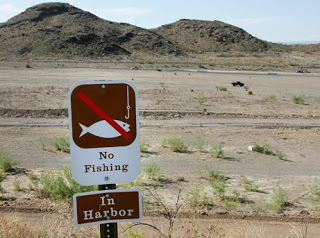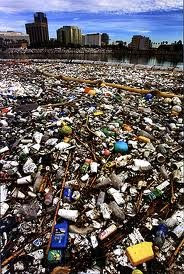Jeffrey Green
Activist Post
Fresh clean water is essential to all life forms. It seems that a resource so vital should not be corralled, controlled, or corrupted by any corporation or government. However, with fresh water supplies under assault on multiple fronts, governments seek to further clamp down on individual human usage, while doing very little to reduce the reasons for the contamination. At the same time, corporations that repackage water and sell it back to the public enjoy financial benefits from the scarcity of their “product.”
Upon review, water scarcity is an alarming prospect indeed; especially in areas of the world where clean water was limited to begin with. The extended droughts caused by climate shifts, cumulative aspects of general human pollution, dirty industrial and agricultural practices, and blatant chemical contamination significantly reduce the supply of clean water. The more precious this resource becomes, the more our friendly multinational corporations profit from this new “commodity,” and the more our governments seek to tax it.
Here are 10 reasons why our water supply is in deep trouble:
 |
| Dangerously Dry Lake Mead |
1. Population expansion in arid places: Areas in the U.S. with arid climates like Las Vegas and Phoenix saw massive population booms over the last 40 years — basically since the invention of air conditioning. The same basic water source (Rocky Mountain snow-melt) feeds this entire region with the Colorado River. Even parts of California and Northern Mexico suck off this source. Predictions of another dust bowl are alarming. The situation in this region is so dire that many water restrictions have been imposed including criminalizing rainwater collection and rationing crop irrigation. The water level of the area’s reservoir, Lake Mead, is at an all-time low as the 11-year drought continues.
2. Industrial Agriculture pollution: Industrial agriculture is one of the leading causes of water pollution in the United States today. The EPA estimates that 48% of river and stream pollution, and 41% of lake pollution, is due to industrial agriculture. The most common pollutants from agriculture include animal waste (raw manure is up to 160 times more toxic than raw municipal sewage), pesticides, fertilizers, and animal antibiotics. Water pollution from industrial farms not only damages the environment and kills wildlife, but it can also sicken and kill people.
3. Oil disasters and dispersants: The Gulf Oil Spill leaked over 5 million barrels of oil into the Gulf waters — and many reports indicate it is still gushing. The BP “clean-up” teams have sprayed up to 36,000 gallons of chemical dispersant in a single day into the Gulf, which is believed to be far more toxic than the oil itself. Although Gulf waters are clearly not used for fresh water, there is evidence that this environmental disaster has already contaminated drinking water and crops along the Gulf Coast and beyond. There was also one of the largest oil spills in Midwest history this past July that went largely unreported nationally — where an estimated 1 million gallons of oil has leaked into major fresh water sources.
4. Commercial bottlers: Large multinational beverage companies are usually given water-well privileges (and even tax breaks) over citizens because they create jobs, which is apparently more important to the local governments than water rights to other taxpaying citizens. These companies such as Coca Cola and Nestlé (which bottles suburban Michigan well-water and calls it Poland Spring) suck up millions of gallons of water, leaving the public to suffer with any shortages.
5. Fracture drilling for natural gas: Congress exempted hydraulic fracturing from the Safe Drinking Water Act after it was considered safe since a 2004 study (PDF) by the Environmental Protection Agency found that it posed no risk to drinking water. The evidence is now overwhelming that it does indeed contaminate the groundwater to where some residents can even light their tap water on fire. The new documentary Gasland does a great job educating the public about this method and its effects on the water supply.
6. Pharmaceuticals: It has been well-reported that measurable levels of pharmaceuticals like antidepressants, pain killers, antibiotics, and sex hormones have entered the public water supply due to our pill-pushing “health” system. Studies have shown that these pharmaceuticals are causing bizarre mutations to wildlife. We can only assume these drugs have similar effects on humans, thus making most public water systems unfit to drink for this reason alone.
7. Industrial/mining waste: Industrial and mining waste are also major pollutants in our waterways. These wastes typically include dangerous heavy metals, the most recognizable being Mercury. A 2009 study found dangerous levels of Methylmercury in all of the 291 U.S. freshwater streams tested in the report. Most of the Mercury contamination in the U.S. is blamed on industrial air pollution that falls back to the surface with rainfall.
8. Human Pollution: Many areas still have massive challenges managing human sewage which always ultimately ends up in local water supplies. The Great Lakes provides the most recent example of how damaging raw sewage could become if not disposed of properly. A 2010 study covering 5 cities reported 41 billion gallons of raw sewage and dirty storm water flows into the Great Lakes each year. Besides human sewage, human debris — especially plastic — has caused immense floating garbage patches in the Pacific and Atlantic Oceans. Plastic debris also has found its way into fresh waterways, contaminating them with high levels of bisphenol A (BPA), which is said to cause problems with human reproduction, the nervous system, brain functioning, behavior, and much more.
9. Shifting Climate: It cannot be disputed that the overall climate patterns are shifting and changing. While the experts debate whether the cause of this climate shift is from global warming from C02, the sun, La Niña, or Earth’s poles shifting, the fact remains that record extreme weather is happening all over the globe. Since there is always the same amount of H2O on the planet at all times, some areas have had record droughts, while others have had record flooding. Areas like the Southwest U.S. are experiencing an 11-year drought, while the Midwest has been ravaged by record floods. The effect of droughts on the water supply are obvious, but flooding too can massively contaminate the public water supply as was seen in the aftermath of Katrina.
10. Gluttonous Usage: People in First World countries who enjoy modern water treatment and delivery systems tend to use astronomically more water than their developing-world counterparts. Americans lead all global citizens in water usage at about 580 liters-per-day, followed by Australians at just under 500 liters-per-day. Although a fully-developed nation, the British only use around 150 liters-per-day, followed by India coming in at around 120 lpd. Clearly there are ways to live modern healthy lives while respecting the value of fresh water through conservation methods and practices.
As our public drinking water becomes more limited because of contamination, the purification process applies more chemicals — which further compromises the quality of water. Incidentally, most public water companies still put sodium fluoride in the water despite that it is proven to be a neurotoxin. In fact, a town in California is being fined by the state health department for NOT fluoridating the water.
Water, which is our very foundation of health, seems to be under assault from all sides. This cannot be allowed to continue. We need to become involved at the local level, have our water independently tested, then research the various ways we can filter the water ourselves if our local governments will not support our right to drink water free of contaminants and toxic additives.



i have been in auburn, maine–and had REAL poland spring water–from a filling station bathroom tap. just sayin’…